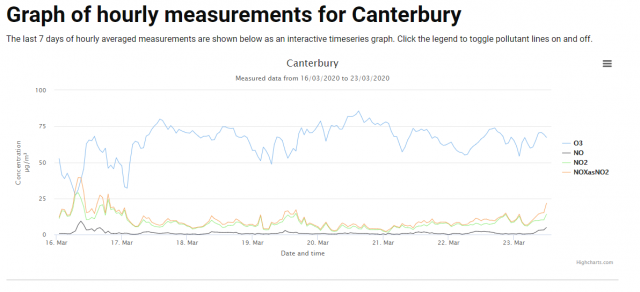Forum Replies Created
-
AuthorPosts
-
 DawsonParticipant
DawsonParticipantCan you post a picture of the bit which is stuck?
Have you used this site to help you:
http://www.astro-baby.com/EQ6%20rebuild%20guide/EQ6%20RA%20strip%20down.htm
James
 DawsonParticipant
DawsonParticipantDavid, we can probably help out. We’d need to test the data transfer rate from our observatory over 4G else could set up a 14” or 11” SCT from someone‘s garden.
James8 June 2020 at 5:12 pm in reply to: Observer’s Challenge – Occultation of Venus by the Moon, June 19 #582626 DawsonParticipant
DawsonParticipantThis is going to be a tricky one. We’d planned to try and observe the occultations of Venus, but I was undecided what filters to use, and I need to make a longer sun-shield.
James
 DawsonParticipant
DawsonParticipantTaken at 01:34 UT 30.05.2020 with Canon 6D at prime focus on Celestron C11 (15 second exposure, ISO 800); excuse the hot pixels; a cropped version with brightness stretched to show it easier. Have the raw files.
 30.05.2020(BAA).png)
 30.05.2020(BAA)stretched.png)
 DawsonParticipant
DawsonParticipantGary / Jeremy, I’ve never made a meaningful observation of anything the VSS is interested in. What sort of settings would you recommend For a DSLR at prime focus? I think the FoV will be too wide with my 80mm refractor so May have to jump right up and use my C11 and Canon 6D. I think I can get to a site with a low northerly horizon that isn’t too light polluted; but 3am though, whose idea was that?!?!?! 🙂
 DawsonParticipant
DawsonParticipantHow long will is likely remain mag 10 for?
James
 DawsonParticipant
DawsonParticipantThanks for all the comments and links. It is fascinating. I’m not intending to image or observe near the Sun, I was just interested to see what sort of results the serious amateur can achieve so close to the Sun. Some of the images in the article Alex links to look far too close for comfort!
Thanks.
James
 DawsonParticipant
DawsonParticipantChris, that is really impressive, thank you. Looking at those dates/times on Stellarium, it is really impressive at how close to the Sun 6 degrees is. Do you take any measures to extend a dew shield of the like to reduce the glare of the Sun into the optics?
James
 DawsonParticipant
DawsonParticipantNice capture
 DawsonParticipant
DawsonParticipantIt is an amazing three volume set.
James
 DawsonParticipant
DawsonParticipantYes, with fewer aircraft and fewer cars around, the sky conditions may improve.
With regards air “quality”, I’ve been watching the UK Air Information Resource and not seen any particular downward trends yet. The data below is for the last 7 days for Canterbury, but back data for several years from numerous sites around the country exist:
https://uk-air.defra.gov.uk/data-plot?site_id=CANT&days=7
James

 DawsonParticipant
DawsonParticipantThere are typos in the booklet too unfortunately:
https://shop.royalmail.com/visions-of-the-universe-prestige-stamp-book
 DawsonParticipant
DawsonParticipantThere are a few, some:
The Cambridge Star Atlas (2011), copies available for under £10.
Uranometria 2000 volume 1 (1987), copies available for £25.
Sky Atlas 2000.0 (1985), cheapest seems to be about £40 but it is lovely.
Star Atlas of Reference Stars and Non-stellar Objects (1969), copies £50.
Interstellarum Deep Sky Atlas: Desk Edition (2014), copies £65 or so.
Millennium Star Atlas 3 Volume Boxed Set (2006), £600 or so…
The first two are fine; you can probably find a way to look at them all inside online somewhere. I really do like Stellarium though which is usually my first port of call, with all the added star databases loaded in.
 DawsonParticipant
DawsonParticipantIt really is very good. Clamps the eye piece well, and really is easy to adjust and centre an object. Really good for outreach stuff.
 DawsonParticipant
DawsonParticipantThanks all. Interesting discussion. This has helped.
James
 DawsonParticipant
DawsonParticipantA noisy child’s orrery I have (currently very noisy as running at 12v and not 4.5v) and the light grabber software work well. I need an external webcam ideally and not use the built in one on the laptop.
thanks for the discussion.
james
Link to a video of the set up on my dropbox: https://www.dropbox.com/s/inv87rgfm4ht08u/IMG_1529.MOV?dl=0
 DawsonParticipant
DawsonParticipantI think a webcam will have sufficient sensitivity for my model; but may struggle if I put it on a scope and point at a real star.
 DawsonParticipant
DawsonParticipantThat is another good idea. Thanks.
On an SGL thread I started on this topic, someone suggested a bit of software which uses a webcam into a PC and does real time light curves, which is brilliant and I think is the solution I’d go for. It needs Adobe Flash and I can only get it to work in FireFox, but otherwise it is very good:
http://www.planetarium-activities.org/shows/sp/lightgrapher
The other thing the SGL thread has raised, which I had thought about and won’t factor into my model, is limb darkening of the distant star. All interesting stuff:
https://stargazerslounge.com/topic/342034-exoplanet-transit-model/
James
 DawsonParticipant
DawsonParticipantMy DIY/electronics mate thinks he can do something with an Arduino / Pi to detect and display the data real time, like this:
https://www.instructables.com/id/Plotting-real-time-data-from-Arduino-using-Python-/
I’ll report back.
James
 DawsonParticipant
DawsonParticipantDr Dan Brown of Nottingham Trent University has uploaded the talk by Alan Heath to You Tube, so everyone can enjoy it:
https://www.youtube.com/watch?feature=youtu.be&v=Srx6VE8UfGY&app=desktop
James
-
AuthorPosts
